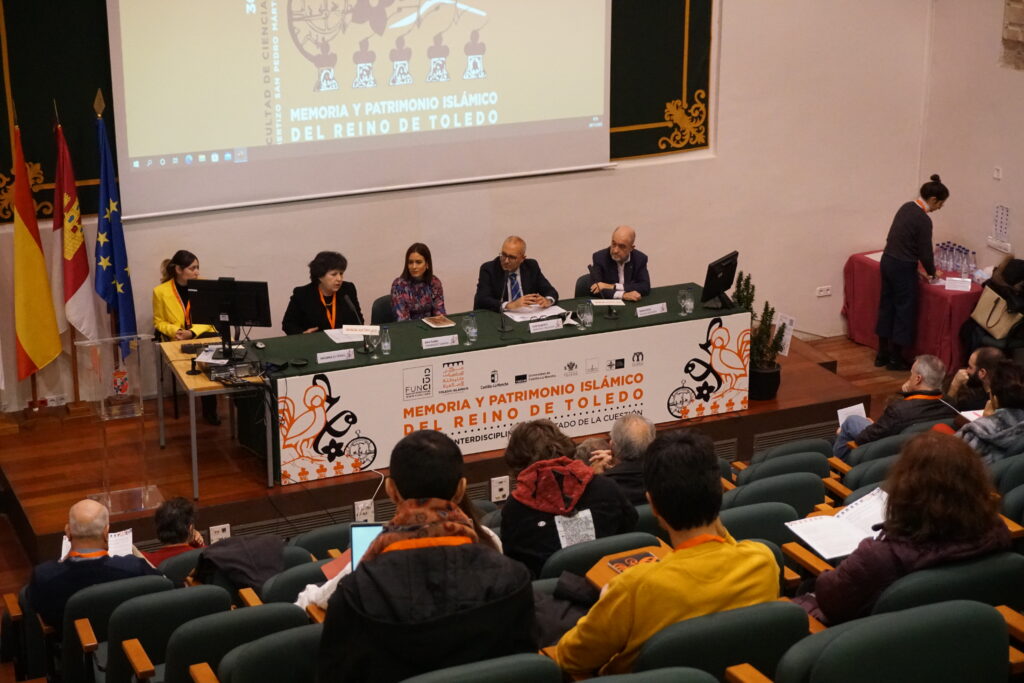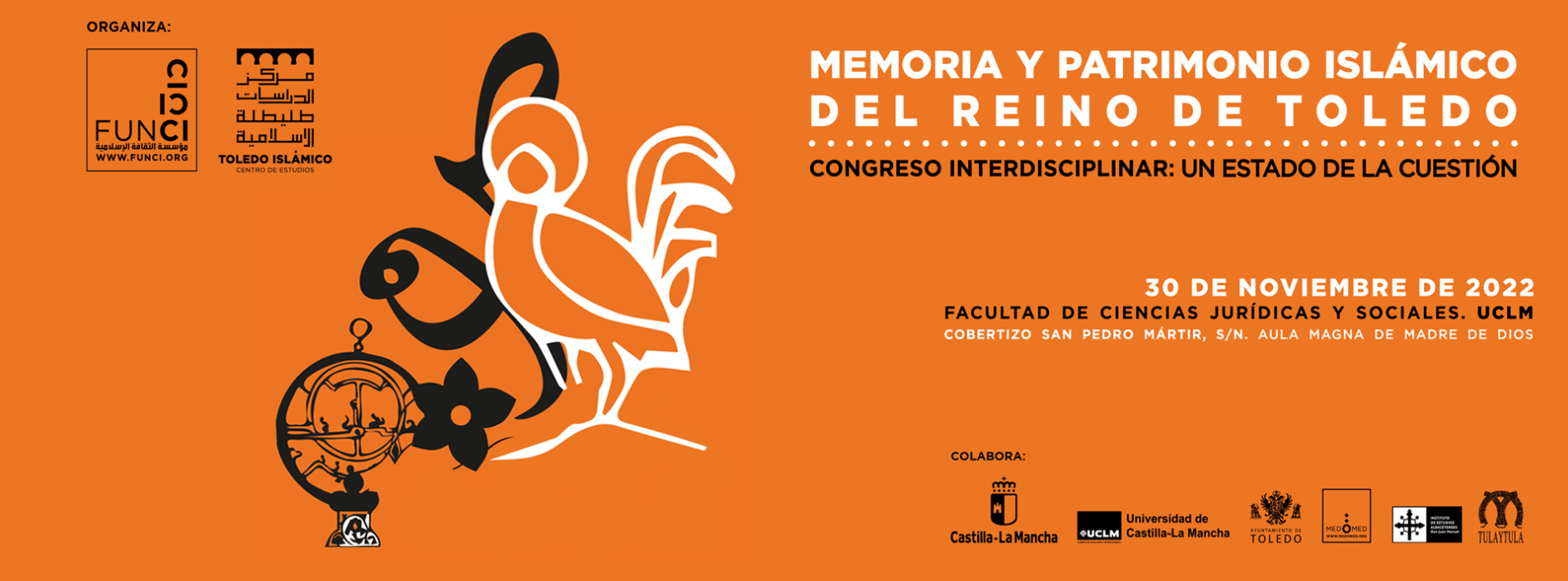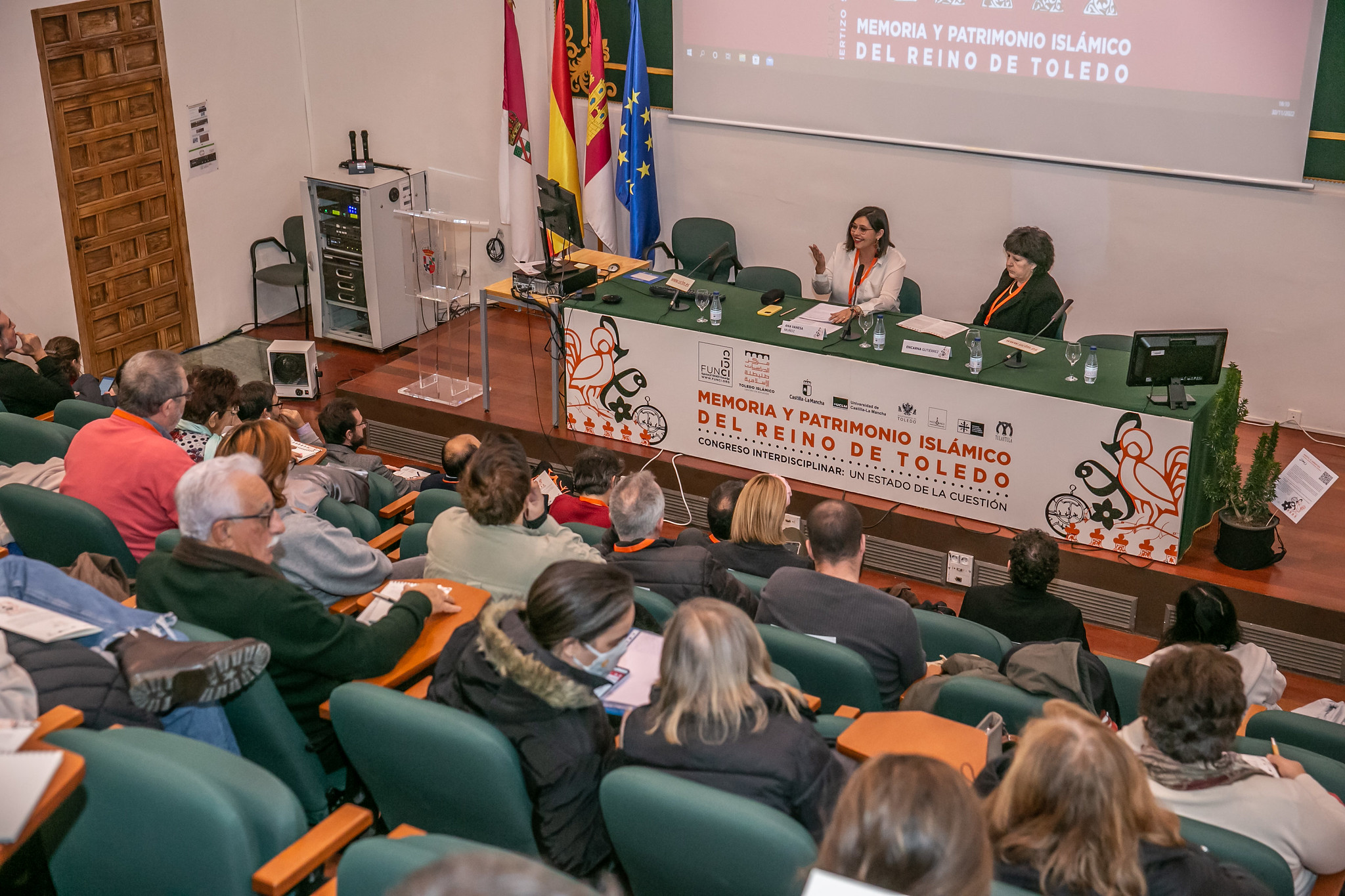Articles, Communications
Conclusions of the Congress on Islamic past of Toledo
Date of publication of the article: 01/12/2022
Year of publication: 2022
Article theme: Activities, Al-Andalus, Conferences, FUNCI, heritage, History.
On 30 November 2022, the Centre for Studies on Islamic Toledo (CETI), which belongs to the Islamic Culture Foundation (FUNCI), held the Interdisciplinary Conference “Islamic Memory and Heritage of the Kingdom of Toledo: a state of the question”. The activity took place in the Aula Magna of the Faculty of Legal and Social Sciences of the University of Castilla-La Mancha, in the building of the Madre de Dios.
It was the first conference organised by the Centre for Studies on Islamic Toledo, in the framework of the anniversary of the enthronement of Abderrahman II twelve centuries earlier. Its goal was to bring together the main researchers dedicated to the recovery of the Islamic memory and heritage of Castilla-La Mancha. The activity also served as a presentation of the CETI and reflected the networking and networking efforts developed by FUNCI over the last year.
We are proud to announce the success of the event. Held over the course of a whole day, the Congress brought together twenty specialists, who presented the main research projects that have been developed over the last decade, reflecting on the Islamic remains present in the region after the Leonese conquest of Toledo in the 11th century, and addressing possible forms of future development. Held in a hybrid format, the Congress was attended by more than 60 participants and streamed by more than 250. In short, more than three hundred people followed the event throughout the day.
Institutional commitment of the region’s authorities
The Congress also received strong support and commitment from the region’s main authorities. The event was attended by the Dean of the Faculty of Law and Social Sciences, José Alberto Sanz Díaz-Palacios, the Director General of Tourism, Trade and Crafts, Ana Isabel Fernández Samper, the Deputy Minister of Culture and Sports, Ana Vanesa Muñoz, and the City Council of Toledo, represented by Francisco Rueda, City Councillor for European Funds, Employment and Internal Affairs.
The participation of the Dean of the Faculty was part of the collaboration agreement signed with the University of Castilla-La Mancha in April 2022 for the promotion of joint scientific and dissemination initiatives. We would also like to thank the Directorate General for Tourism, Trade and Crafts for their financial support and the interest shown by the Regional Government of Castilla-La Mancha (JCCM).
As expressed by Ana Vanesa Muñoz, these efforts are part of “the commitment of Emiliano García-Page’s government to the conservation, preservation, research, promotion and dissemination of regional heritage”. As part of this commitment, she highlighted the recognition of the CETI as a viable project, with great opportunities to contribute to the heritage and social development of the region.
As part of this commitment, he highlighted the recognition of the CETI as a viable project, with great opportunities to contribute to the heritage and social development of the region.
In addition to these representative institutions, the School of Architecture of Toledo (EAT), the Institute of Albacete Studies and the association Tulaytula supported the Congress. Specifically, the EAT loaned a collection of works carried out by its students in the framework of the subject “Heritage Recovery”, which reflected the Islamic legacy present in the architecture of the city of Toledo. The exhibition dressed the courtyard of the Madre de Dios building, which hosted the lunch and coffee breaks of the congress.
Islamic heritage and legacy
The Congress was organised into four panels, under the titles: “‘Abd Al-Rahman II, 1200 years after his enthronement”, “Moriscos, Mudejars and other Islamic survivals in the Kingdom of Toledo”, “Recent research into Islamic heritage in the region of Castilla-La Mancha” and a final panel dedicated to “Islamic legacy, sustainability and natural and cultural heritage”.
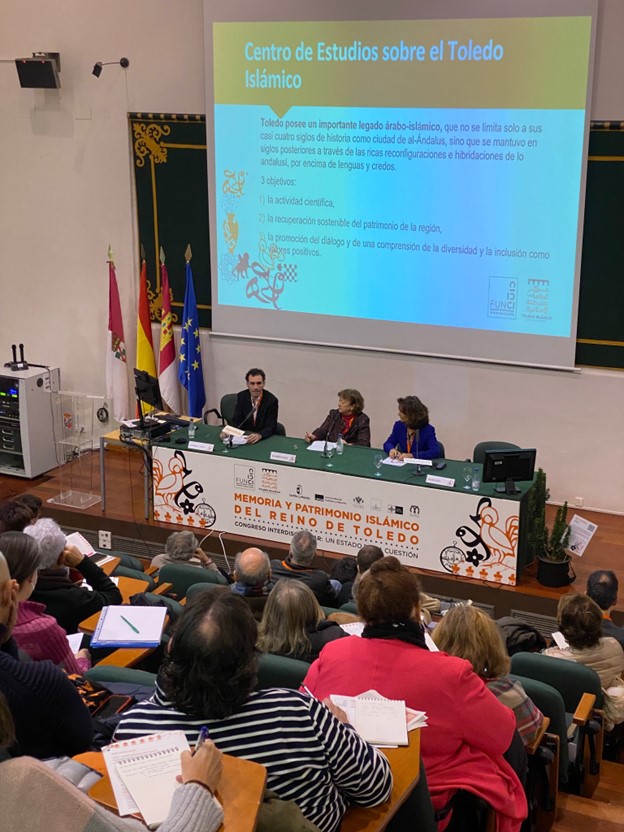 After the opening of the conference, the first panel, formed by Alfonso Casani, scientific coordinator of the CETI, and the emeritus professor María Jesús Viguera, member of the Spanish Royal Academy of History, introduced the Centre for Studies on Islamic Toledo, its main objectives and its ambitions to work in the scientific, informative and social fields. Specifically, he highlighted its complementarity with the Med-O-Med program, cultural landscapes of the Mediterranean and the Middle East, dedicated to the protection of the cultural and natural heritage of the Mediterranean, and which holds a strong environmental and biodiversity preservation focus. This environmental approach is also part of the CETI, which hopes to promote the sustainable natural development of the region, the recovery of indigenous and sustainable plants and the fight against environmental degradation. For her part, María Jesús Viguera, as well commenting on the work developed by FUNCI, presented the main features of Emir Abderrahman II from the Arab chronicles, highlighting the “honeymoon” character with which his government was described.
After the opening of the conference, the first panel, formed by Alfonso Casani, scientific coordinator of the CETI, and the emeritus professor María Jesús Viguera, member of the Spanish Royal Academy of History, introduced the Centre for Studies on Islamic Toledo, its main objectives and its ambitions to work in the scientific, informative and social fields. Specifically, he highlighted its complementarity with the Med-O-Med program, cultural landscapes of the Mediterranean and the Middle East, dedicated to the protection of the cultural and natural heritage of the Mediterranean, and which holds a strong environmental and biodiversity preservation focus. This environmental approach is also part of the CETI, which hopes to promote the sustainable natural development of the region, the recovery of indigenous and sustainable plants and the fight against environmental degradation. For her part, María Jesús Viguera, as well commenting on the work developed by FUNCI, presented the main features of Emir Abderrahman II from the Arab chronicles, highlighting the “honeymoon” character with which his government was described.
The second panel was devoted to Moorish and Mudejar survivals. The interventions of professors Ana Echevarría (UNED) and Ramón Sánchez González (UCLM) stood out, who, contrary to what is commonly considered, highlighted the continuity and coexistence of these minorities in the centuries after the conquest of Toledo. Specifically, Sánchez González highlighted the political motivation behind the expulsion of the Moors in 1609, as opposed to the often-cited lack of social integration of this community.
Sánchez González highlighted the political motivation behind the expulsion of the Moriscos in 1609, as opposed to the often-cited lack of social integration of this community.
The third panel, dedicated to the recovery of the Islamic heritage of Castilla-La Mancha, delved into the different projects currently underway for the recovery of historic sites in Huclés, Tonerías, La Graja and Montiel. The presentation of these works served to emphasise the much work that remains to be done, as well as the traditional historical resistance that these projects have encountered. However, it also served to highlight the wide geographical scope of these projects, which are spread throughout the autonomous community, and the similarities between some of these projects, which contribute to enhance the umbrella role pursued by the CETI and the benefits that networking can bring. Likewise, during the Q&A session, interesting projects such as that of the Andalusian farmhouse of La Graja, developed by Jesús Luis Simón (Instituto de Estudios Albacentenses), Pedro Jiménez (Escuela de Estudios Árabes-CSIC) and José Mª Moreno (Universidad de Alicante), explored the positive impact that this work can have on the local populations, as a form of tourism, economic and environmental development.
A look into the future
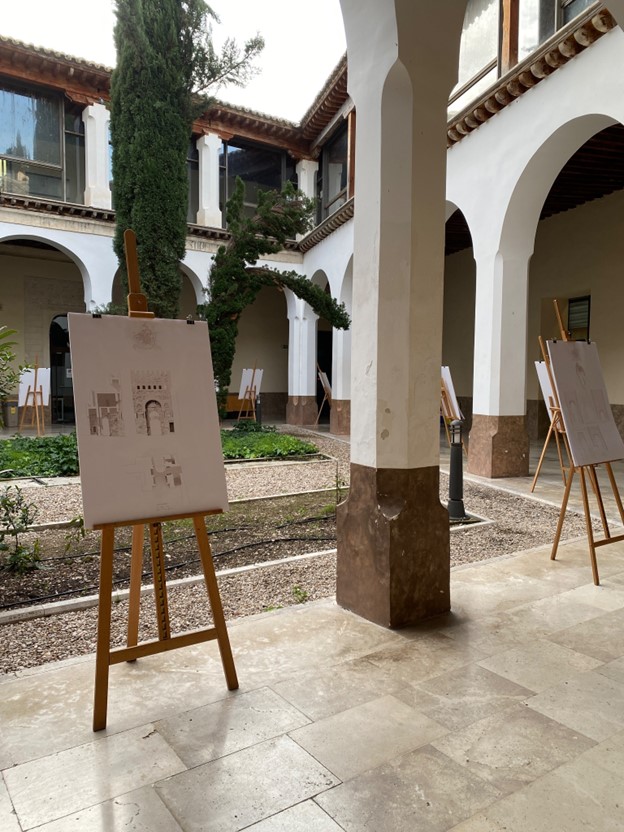 The last roundtable reflected on more cross-cutting issues, with the aim of exploring in greater depth the areas in which the CETI can contribute. Firstly, Ramón Villa (Tulaytula) highlighted the under-representation of projects dedicated to the Andalusian period financed by the JCCM. Less than 9% of the heritage recovery projects funded are dedicated to this heritage. A figure that reflects how much can still be done in this field.
The last roundtable reflected on more cross-cutting issues, with the aim of exploring in greater depth the areas in which the CETI can contribute. Firstly, Ramón Villa (Tulaytula) highlighted the under-representation of projects dedicated to the Andalusian period financed by the JCCM. Less than 9% of the heritage recovery projects funded are dedicated to this heritage. A figure that reflects how much can still be done in this field.
Jesús Carrobles (Royal Academy of Fine Arts and Historical Sciences of Toledo) discussed the existing Andalusian irrigation systems around the city of Toledo, the ancient qanats that once supplied water to the city and which today have an important historical, tourist and environmental sustainability value. Finally, José Ramón González de la Cal (School of Architecture of Toledo) reflected on the urban configuration of the city of Toledo and the changes that have taken place in the understanding of the use of public space. The intervention highlighted the loss of the functionality of the old Al-Andalus institutions, but also the survival of the architectural legacy, which still shapes the design of the city.
Less than 9% of the heritage recovery projects funded are dedicated to Andalusian heritage. This figure reflects how much can still be done in this area.
The conference was concluded by Alfonso Casani (CETI), who took up one of the statements uttered by Ramón Villa to exemplify the work of the Centre presented. “It is important to start these initiatives, but it is more important to continue them”. This is precisely the aim of the Centre for Studies on Islamic Toledo, and we hope that this first initiative will give rise to numerous scientific and informative activities, and will allow us to establish this Congress on a regular basis.


